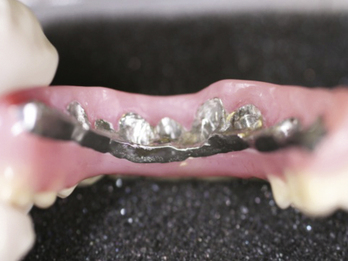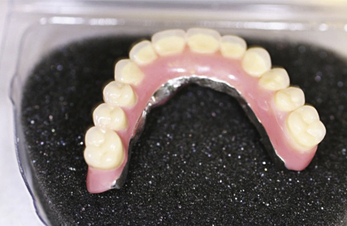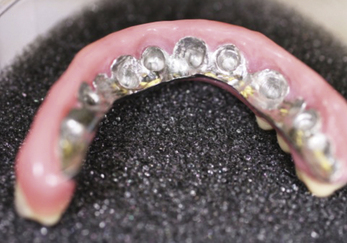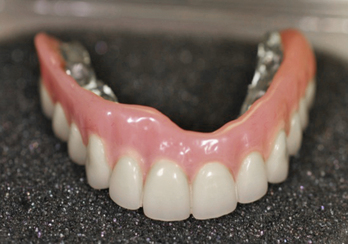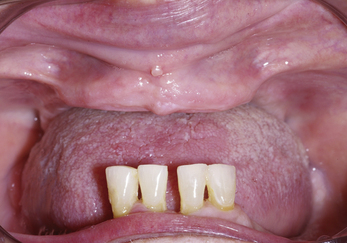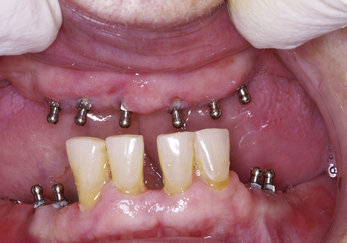Chapter 10 The Laboratory Technician’s Key Role in MDI Prosthodontics
The Laboratory Technician’s Key Role in MDI Implant Prosthodontics:
The author and dentist-lecturer Dr. Benjamin Oppenheimer has been devoted to the process of consolidating advances in MDI laboratory coordination and work simplification via updated step-reduction techniques for fixed (and removable) applications and has pioneered in advancing MDI education with specialized seminars specifically oriented to the dental laboratory community. Rapidly evolving ceramic abutments for MDI fixed crown and bridge cases, along with CAD/CAM generated models, have also come to offer unique contemporary imaging and stent guidance approaches to esthetic restorative simplicity and affordability. Dr. Oppenheimer has been especially productive in presenting MDI educational seminars throughout the United States, emphasizing the close coordination needed between the laboratory staff and the implantologist to refine the essential MDI technology, with special emphasis on fixed crown/bridge applications.
The series of lab images (Figures 10-1 to 10-4) illustrates a typical multiunit Ponabut structure with ridge laps, embrasures, and flange elements designed to produce a secure and esthetically satisfying result. When inserted with self-cure resin cement, this fixed, splinted full-arch system can be made hygienically cleansable with a water irrigator lavage, preferably teamed up with a dedicated curved-bristle implant brush (e.g., ACCESS Implant Brush), for a well-emphasized labiolingual approach after meals and, of course without exception, before retiring at bedtime.
MDI fixed bridge-splint laboratory technology embodies MDI Ponabuts, which for multiple-unit fixed embodiments require a passive fit of the prosthesis overlaying the abutments and an easy draw without binding interferences, irrespective of any off-angle or nonparallel considerations. This requires the laboratory to block out sufficient relief room around the abutment heads on the working model (made chairside from a polyvinyl siloxane or polyether impression), with MDI analogs inserted, and poured in model stone or epoxy so that either individual castings can be fabricated, tried in and connected intraorally, or a one-piece cast substructure can be manufactured and passively fitted intraorally. Bite registrations and records with any opposing jaw impressions are also produced to further the lab processing. Porcelain or composite resin is then layered and processed over the substructure. Various other techniques with or without an infrastructure are currently undergoing extensive development for both MDIs, conventional implant systems, and hybrid combinations and await additional studies and clinical case reporting to confirm their outcomes.
The Laboratory Technician’s Key Role in MDI Prosthodontics
John Kirdahy’s Innovation Laboratory has consistently offered evolving lab techniques that have helped standardize the coordination of MDI chairside procedures with the implant-oriented dental laboratory and advanced the progressive design and processing of both fixed and removable MDI cases, two of which are represented in Figures 10-5 to 10-14.
Stay updated, free dental videos. Join our Telegram channel

VIDEdental - Online dental courses


